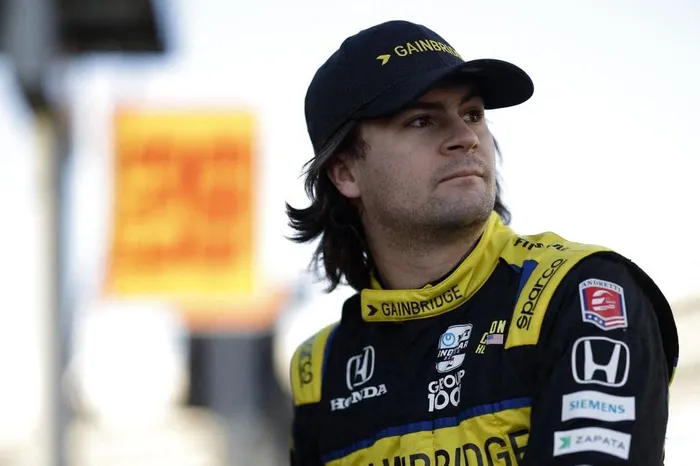
Colton Herta will join Cadillac’s F1 programme in 2026 as a test and development driver, with a Formula 2 season planned to secure his Super Licence points and prepare for a future race seat. Photo: Backpagepix
Image: Backpagepix
When Cadillac make their long-awaited Formula One debut in 2026, much of the spotlight will fall on their experienced driver pairing of Sergio Pérez and Valtteri Bottas.
The American manufacturer, entering the sport under the General Motors umbrella, have opted for two seasoned veterans to spearhead their first campaign. It is a pragmatic choice:
Pérez brings recent race-winning pedigree and deep knowledge of F1’s modern machinery, while Bottas offers proven speed, consistency, and invaluable experience from years alongside Lewis Hamilton at Mercedes. For a brand-new constructor, stability at the wheel is essential.
But Cadillac’s long-term vision may not rest solely on its launch drivers. In the background, another name is quietly being groomed for the future – Colton Herta.
The young Californian has been confirmed as Cadillac’s official test and development driver for 2026, signalling GM’s ambition to plant a distinctly American flag in the F1 paddock.
Herta’s story is steeped in motorsport heritage. The son of former IndyCar driver Bryan Herta, he grew up immersed in racing culture. His rise through the junior ranks included stints in Europe, competing in series such as British F3 and Euroformula Open, before establishing himself as a star in the United States.
Since debuting in IndyCar, Herta has claimed multiple race wins and pole positions, quickly building a reputation for daring overtakes, raw pace, and a cool head under pressure. However, moving from IndyCar to Formula 1 is not as simple as changing garages.
The two series, while both top-tier open-wheel championships, operate under very different philosophies. IndyCar machines are built to a more standardised specification, with less emphasis on aerodynamics and development, meaning the racing is closer but the technical gap between teams is narrower.
F1, by contrast, is a technological arms race where each constructor designs its own car, and performance hinges on intricate aerodynamics, hybrid power units, and relentless upgrades.
Race formats also differ: IndyCar features rolling starts, oval circuits, and refuelling, while F1 focuses on road and street courses, standing starts, and tyre strategy.
For Herta, adapting to the nuances of F1 machinery, Pirelli tyres, and the championship’s global grind will be a crucial test. The biggest hurdle, however, remains the FIA Super Licence points system.
Despite his IndyCar success, Herta has not automatically qualified for the 40 points required to race in F1. To address this, Cadillac has orchestrated a bold move: placing him in Formula 2 for the 2026 season.
A year in F2 will allow him to gain experience on many of the same circuits used in F1, adjust to the European racing environment, and, most importantly, collect the points necessary to secure his licence.
The best-case scenario is that Herta excels in F2, impresses Cadillac’s engineers in his test and development role, and positions himself as a natural successor when a race seat opens up – potentially as early as 2027.
With Cadillac intent on building its F1 identity around American talent and engineering ambition, there may be no better candidate to lead that charge than Colton Herta. For now, the question remains: Can he make the cut?
Related Topics: